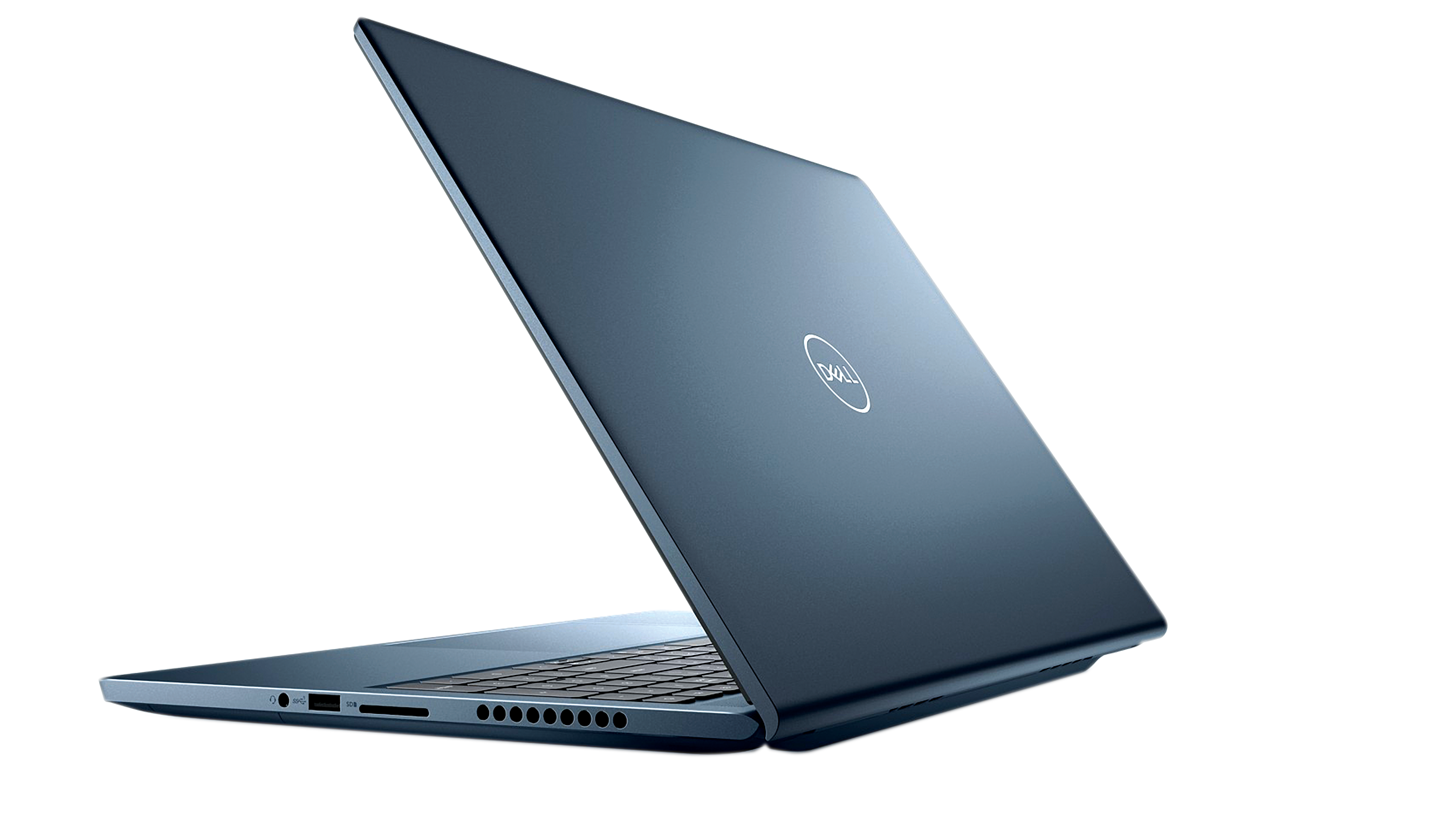Dell Inspiron 16 Plus (7610) review: A nippy machine for those on a budget
A laptop built to a precise budget, and that shows in places - but there's no disputing its bang per buck

-
+
Speedy processor
-
+
Big touchpad
-
-
Dim display

IWe're not sure what a collective noun of Dell XPS laptops is – a luxury? – but the Inspiron 16 Plus breaks away from this month's pack to focus on value. And in terms of specification, it's hard to criticise. Yes, it's an 11th generation Intel Core processor rather than 12th generation, but you also benefit from RTX 3050 graphics, 16GB of memory, a 512GB SSD and a 3K 16in display. Quite a haul for £999 (including VAT).
For the vast majority of people, the eight cores of the Intel Core i7-11800H will be more than enough. A score of 6,219 in PCMark 10 hammers that home, and there's nothing to be ashamed of when hitting 7,273 in Geekbench 5's multicore test or 9,673 in Cinebench R23. Or 265 in the IT Pro benchmarks come to that. Yes, an equivalent laptop with a Core i7-12700H – most notably the identically priced Huawei MateBook D 16 – will return around 11,000, 12,000 and 340 in those three tests, but the Inspiron 16 Plus remains one nippy machine.
There's gaming prowess here too. At 1080p with settings set to High, the RTX 3050 pushed the Inspiron to 46fps in Metro: Exodus, 66fps in Shadow of the Tomb Raider and 52fps in Dirt 5. Switch to the screen's native resolution and those figures drop to 25fps, 38fps and 35fps, but you can still get playable frame rates if you drop quality settings to Low.
Is it too cruel to suggest that a Low setting makes more sense bearing in mind the quality of the panel on offer? Perhaps, as it's by no means awful: a peak brightness of 270cd/m2 is fine for use inside, and it covers 96% of the sRGB gamut with an excellent average Delta E of 0.53. It just lacks punch. We found ourselves repeatedly pressing the brightness button hoping for that little bit more, and the whites aren't as white as we like when using Word or Excel. We prefer the MateBook's screen, despite its lesser 1,920 x 1,200 resolution.
The lack of colour coverage also means films look a fraction drab when placed next to a high-end laptop or iPad, but I can't complain about the speakers' quality. They're powerful and capable of handling delicate music with surprising care. I wouldn't use it as a party speaker, but it's fine in a hotel or student room.
Dell has also packed in one of the biggest touchpads we've ever used. We willl stick my neck and say it's actually the biggest, at 134 x 90mm. It's as smooth and responsive as you'd expect, with its literal downside being the weak-feeling button presses that betray this laptop's budget inclinations.
There's even a number pad here, with a sensible (but subtle) gap between it and the main keyboard. The keys are largely easy to hit, but a couple of decisions made us curse when typing. We got used to the slim Enter key, but the half-height up/down cursor keys are a real pain. The keys also lack the cushioned feel of the best keyboards, so while we appreciate the excellent backlighting and clear labelling of the function row we would only give the keyboard three stars out of five.
Unlike the XPS range with its USB-C love affair to the detriment of all other ports, you benefit from a wide range here. One USB-A port apiece sits on each side, albeit the slower USB 3.2 Gen 1 rating, with a full-size SD card slot and 3.5mm jack on the right. Head to the left and you'll find an HDMI output and, the star inclusion, Thunderbolt 4 USB-C port.
That port also supports power delivery, but Dell provides a proprietary 130W power supply in the box. It's a chunky 550g unit, but hopefully, you won't need to carry it with you as the Inspiron 16 Plus lasted for 9hrs 25mins in PCMark's office use test and 8hrs 32mins for a looping HD video. Decent results, as you should expect from an 86Wh battery.
The battery is replaceable when it eventually degrades, with nine crosshead screws standing in your way. It's easy to remove the base but harder to replace it, but it's worth the effort. Not only are both SODIMMs replaceable, but so is the main SSD while a second M.2 2230 socket sits empty if you wish to add more yourself.
That's useful because for once you can't customise the specification here. Unless that is, you switch to the more expensive "New" Inspiron 16 Plus (the 7620 not the 7610), which starts at £1,199 for a Core i5-12500H edition. That's moving into the more expensive XPS territory, and we're not convinced the 16 Plus delivers: the "mist blue" finish is stylish in an understated way, and aluminium in the palm rest and lid is always a plus, but this still feels like a mid-range device.
Instead, the buying decision comes down to the cheaper Dell or the Huawei MateBook D 16. Each holds advantages over the other. The Dell isn't as quick in everyday tasks but is a far better gaming system, its battery life is a fraction longer and the screen resolution is higher. But the MateBook is 300g lighter, more enjoyable to use thanks to its screen and keyboard quality, and enjoys the faster CPU. It's close, but the D 16 remains our top budget choice.
Dell Inspiron 16 Plus specifications
| CPU | 8-core (4.6GHz boost) Intel Core i7-11800H processor |
| RAM | 16GB DDR4-3200 RAM |
| Storage | 512GB M.2 PCIe Gen 3 SSD; |
| Display | 16in non-touch IPS screen, 60Hz |
| Resolution | 3,072 x 1,920 resolution |
| Graphics | 4GB Nvidia GeForce RTX 30 graphics |
| Dimensions | 355 x 248 x 16.8-19mm (WDH) |
| Weight | 2kg |
| Operating system | Windows 11 Home |
| Battery | 86Wh battery |
Get the ITPro daily newsletter
Sign up today and you will receive a free copy of our Future Focus 2025 report - the leading guidance on AI, cybersecurity and other IT challenges as per 700+ senior executives
Tim Danton is editor-in-chief of PC Pro, the UK's biggest selling IT monthly magazine. He specialises in reviews of laptops, desktop PCs and monitors, and is also author of a book called The Computers That Made Britain.
You can contact Tim directly at editor@pcpro.co.uk.
-
 ‘Phishing kits are a force multiplier': Cheap cyber crime kits can be bought on the dark web for less than $25 – and experts warn it’s lowering the barrier of entry for amateur hackers
‘Phishing kits are a force multiplier': Cheap cyber crime kits can be bought on the dark web for less than $25 – and experts warn it’s lowering the barrier of entry for amateur hackersNews Research from NordVPN shows phishing kits are now widely available on the dark web and via messaging apps like Telegram, and are often selling for less than $25.
By Emma Woollacott Published
-
 Redis unveils new tools for developers working on AI applications
Redis unveils new tools for developers working on AI applicationsNews Redis has announced new tools aimed at making it easier for AI developers to build applications and optimize large language model (LLM) outputs.
By Ross Kelly Published
-
 Google layoffs continue with "hundreds" cut from Chrome, Android, and Pixel teams
Google layoffs continue with "hundreds" cut from Chrome, Android, and Pixel teamsNews The tech giant's efficiency drive enters a third year with devices teams the latest target
By Bobby Hellard Published